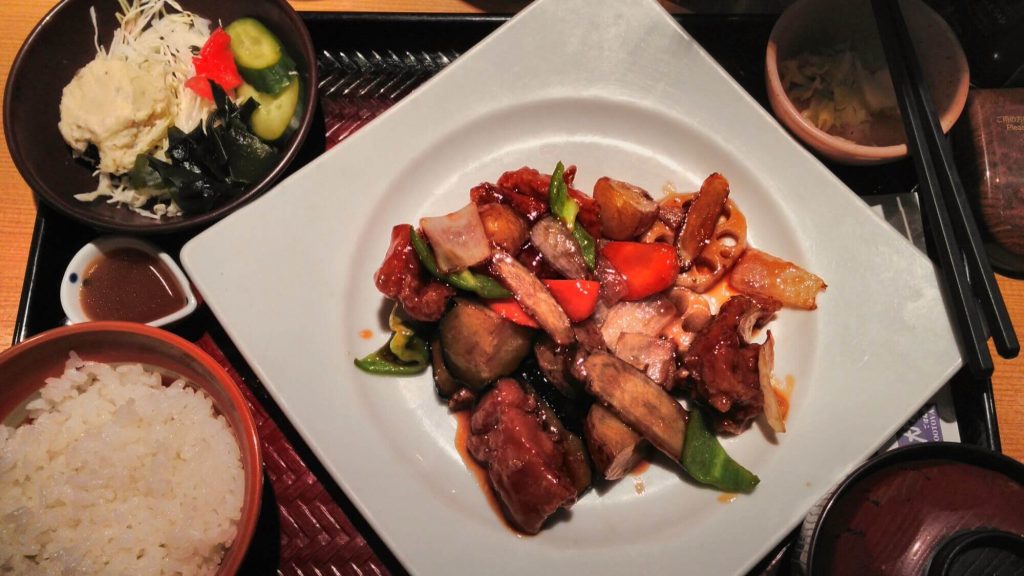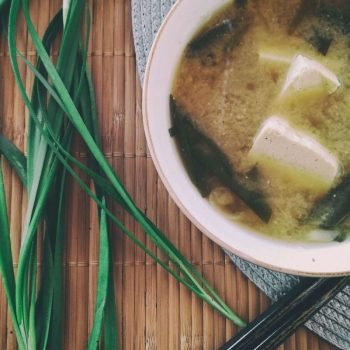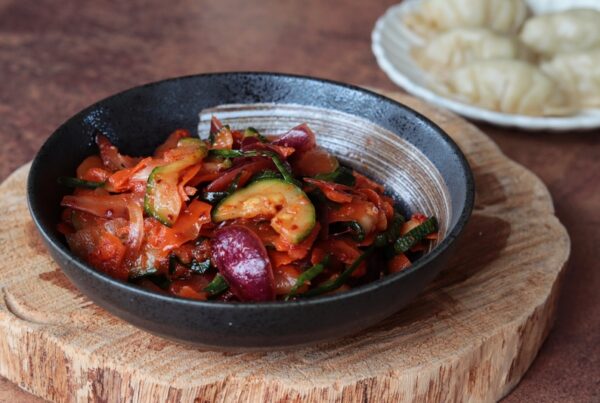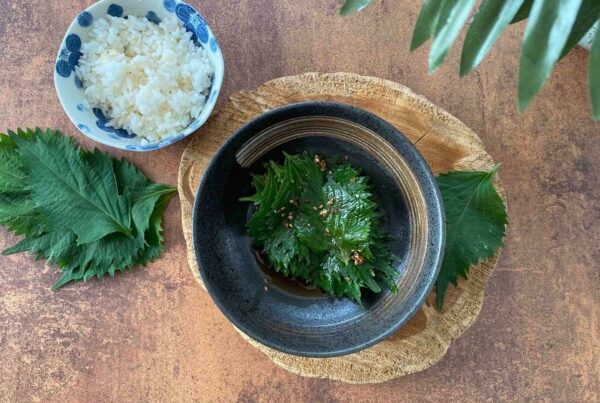
Miso soup is a traditional Japanese soup made with few ingredients. It’s actually very easy to make authentic miso soup at home.
What is Miso Soup?
Miso soup is a staple of Japanese cuisine and is enjoyed both at home and at restaurants. For me miso soup is the easiest soup I can make at home. This may sound strange to you if you are not familiar with Japanese cuisine but trust me, the cooking process is very simple. The key is to keep the basic ingredients in your pantry.
Miso Soup in Japan
Miso soup is a very common and popular food in Japan, and it is often served at every meal, including breakfast. People of all ages enjoy miso soup. In Japan miso soup is almost always a part of a typical Japanese meal (Ichiju Sansai) that looks more like a menu. It consists of the following elements: rice, main dish, two side dishes, pieces of fermented vegetables and soup.

In many countries soup is always served first but in Japan miso soup is part of the whole meal and some people even eat it as a last dish. It also doesn’t have to contain a lot of vegetables. In restaurants, as a part of a menu, it usually contains few pieces of tofu, wakame seaweed and maybe a little bit of spring onion and that’s it. It’s mainly about the broth.
As it’s easy to make, many people enjoy miso soup every day. Depending on the region and season there are many varieties of miso soup. The most basic ingredients are wakame and tofu but you can spice it up with different veggies. That’s why every time I cook miso soup, it has a slightly different flavor.
Ingredients for Miso Soup
Miso soup consists of three basic ingredients
1. Dashi
Dashi is basic Japanese stock used in many other Japanese dishes. There are different types of dashi and also several ways you can make one. Basically, you can make dashi on your own at home, you can buy prepared dashi packets, or you can buy dashi powder. Some people avoid using dashi powder but honestly I use this dashi powder most of the time because of two reasons. First, it is the fastest way you can prepare miso soup and second reason is availability. It depends where you live but in my case it is quite hard to get ingredients for home made dashi stock and it can get pricey. For more information read my post on how to make dashi.
2. Miso
Miso is a fermented soybean paste made from soybeans and grains. It comes in a variety of flavors, colors, and textures. The flavor and color of miso can vary depending on the type of beans used, as well as the length of the fermentation process. I recommend trying different types of miso and choose the one you like the best because there is no “right” miso for miso soup. Another important thing is, miso can vary in saltiness, too. So you may need to adjust the amount in the recipe.
3. Other ingredients (tofu, seaweed and vegetable)
If you cook miso soup at home, the advantage is that you can put almost any vegetable and as much as you want. Usually you would use vegetables that are in season. I recommend trying:
- Asparagus
- Green onion
- Green bean pods
- Mung sprouts
- Sweet potato
- Bok choy
- Edamame
- Eggplant
- Chinese cabbage
- Mushrooms
- Zucchini
- Carrot
- Squash
How to Make Miso Soup? Important Tips.
- If you use dashi powder, put it in cold water together with wakame and let it heat over a medium heat.
- In the meantime you can prepare vegetables. Remember to cut it in equal-sized pieces and those that need more time to cook, add first.
- Add tofu last. Tofu doesn’t need to be cooked and silken tofu may easily break when you’ll be dissolving miso paste in the soup
- Add miso right before serving.
- Never boil a miso soup after adding miso paste. It will lose it’s nutrients, flavors, and aromas.
Questions You May Have Regarding Miso Soup
Is Miso Soup Healthy?
Miso soup can be a healthy addition to your diet, as it is low in calories and high in nutrients. It contains a variety of vitamins and minerals, including B vitamins, copper, and manganese. Miso is fermented, which means it contains beneficial bacteria that may help support gut health. Some Japanese eat miso soup daily. The only thing I would be wary of is salt content.
How Much Sodium Is In Miso Soup?
A typical serving contains around 200-300 mg of sodium (depends on miso brand). If you are on a low-sodium diet or are sensitive to sodium, you may want to limit your intake of miso or choose a low-sodium variety. But overall I think miso soup can be a healthy and flavorful addition to your diet.
Is Miso Soup Gluten Free?
It depends on the type of miso paste. Miso is made from soybeans (gluten free) and grains. Some grains contain gluten, some not. However, it is possible for miso paste to be contaminated with gluten during the production process. So it is important to check the label on the miso paste to make sure it is certified gluten-free.
Is Miso Soup Vegan?
Miso soup can be vegan. It all depends on dashi stock. Dashi can be made of dried bonito flakes, anchovies, or sardines. Vegan dashi is made of kombu kelp or shiitake mushrooms or a combination of them.
Why Does Miso Soup Separate?
Miso paste never really dissolves in the soup and if you leave it untouched for few minutes it will look cloudy but that’s absolutely normal. It’s all because proteins in the miso paste separates in the liquid.
Can You Make Miso Soup without Dashi?
Miso soup without dashi is not a miso soup. It is the base of miso soup which adds to the soup the unique umami flavor.
Can Miso Soup Be Reheated?
Reheating is okay but be careful not to boil it. As boiling would destroy miso’s nutrients, flavors, and aromas.
How Long Does Miso Soup Last?
You can keep miso soup in refrigerator for up to 2 – 3 days. In general, it is best to eat miso soup as soon as possible after it has been made to ensure that it is at its best quality. It may lose its aroma and taste as time passes.
Interested to discover more about Japanese cooking? Let’s keep in touch on Instagram, Facebook, and Pinterest.
Sharing is caring:

Recipe for authentic miso soup
Video
Ingredients
- 400 ml water
- 1 tbsp wakame seaweed
- 1 tsp dashi powder
- 1 tsp miso
- Tofu and vegetable to your taste
Instructions
- Boil water in a pot and add dashi powder and wakame seaweed.
- Meanwhile, as the water heats up, you can prepare vegetables. Cut each vegetable into approximately the same size pieces so they will cook evenly. Always add the one that needs to cook longer first, but be careful not to overcook it.
- When the vegetables are already cooked, you can add tofu. Then put miso in a small bowl and add a little water from the pot to dissolve the paste. Then pour it back into the pot. Stir a few times, but do not boil the soup too much, just enough to dissolve the miso paste. The soup should no longer boil.
Itadakimasu! [itadakimas]




